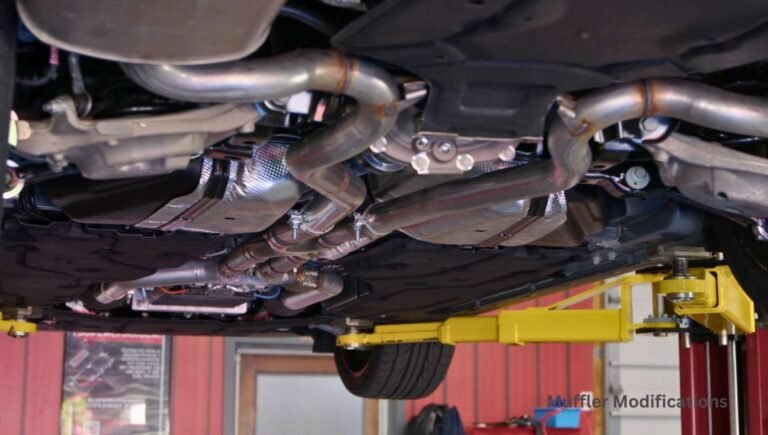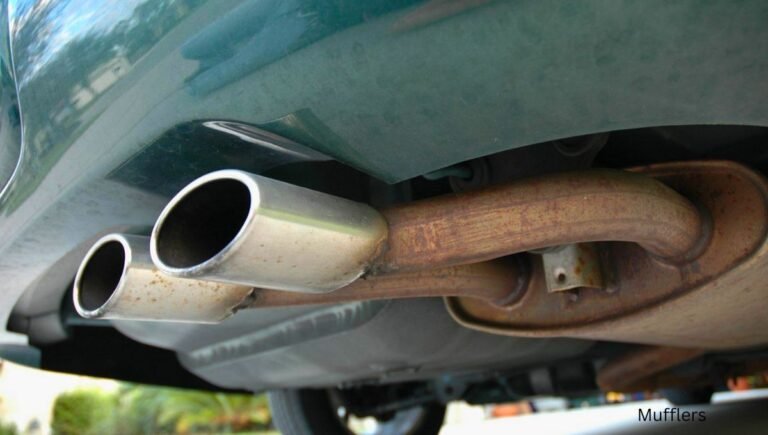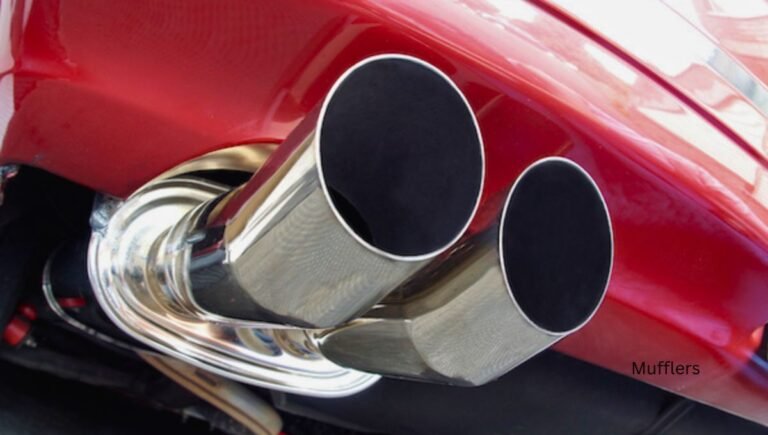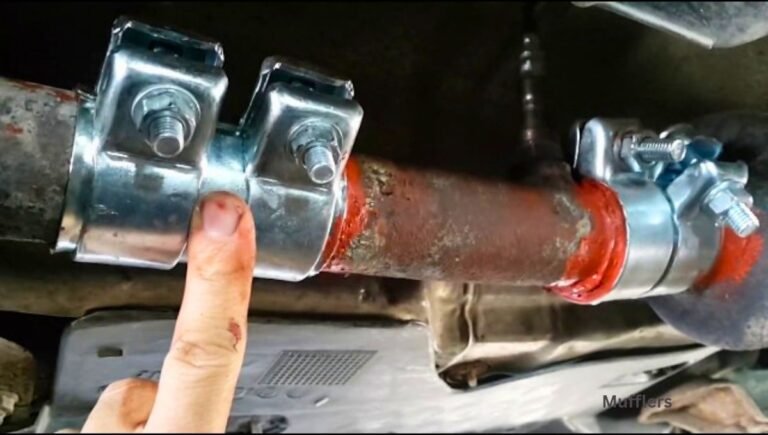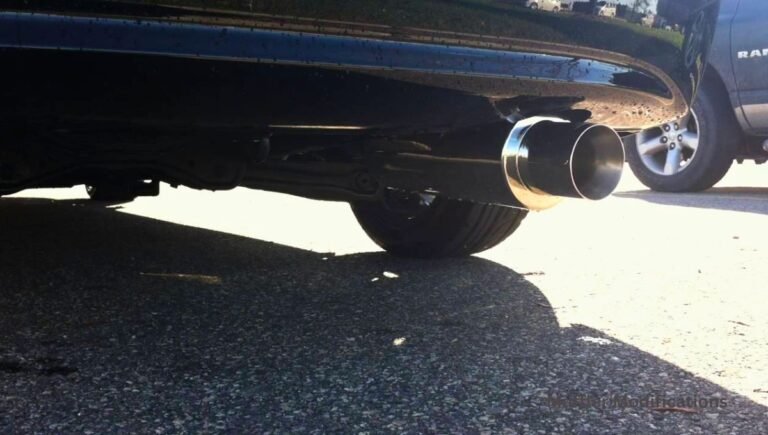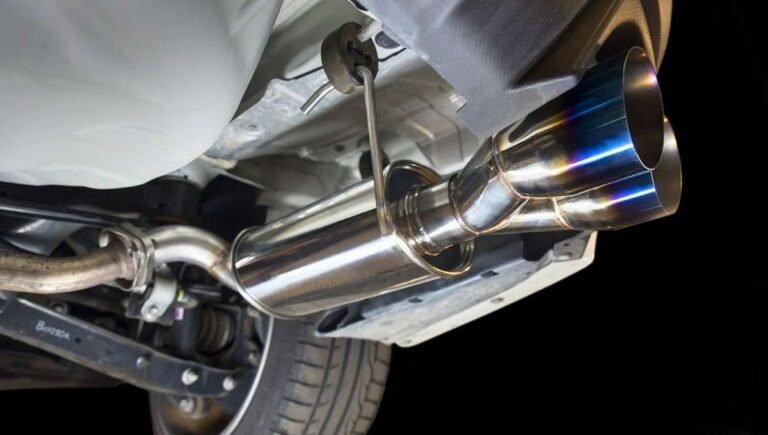Why Did the Muffler Quit the Car Business? Shocking Truth!
The muffler quit the car business due to a lack of opportunities in the evolving automotive industry. As vehicles transition to electric power, the need for traditional mufflers has diminished, prompting the muffler’s departure from the car business.
This shift has led to an increased focus on eco-friendly and quieter transportation, which has influenced the market’s demand for mufflers. Consequently, the muffler has sought new opportunities in alternative industries to adapt to the changing landscape of automotive technology.
This change reflects the ongoing advancements in the automotive sector, highlighting the need for innovation and adaptation to meet the demands of modern transportation.
The Mysterious Exit
The reason behind the muffler’s departure from the car industry remains a mystery, leaving many puzzled. This unexpected exit has sparked curiosity and speculation among automotive enthusiasts.

The Muffler’s Role In The Car Industry
The muffler played a crucial role in reducing noise pollution from vehicles.
It ensured smoother engine operation and improved overall driving experience.
Initial Signs Of Trouble
- Muffled sounds started to become louder over time.
- Performance issues like reduced fuel efficiency began to surface.
Behind The Exhaust Scenes
For years, the muffler has been an essential component in the automotive industry. But recently, the news broke out that muffler manufacturers are quitting the car business. This sudden decision has left many people wondering about the reasons behind it. Let’s take a look at some of the factors that led to the muffler’s departure from the car industry.
Market Pressures And Competition
The automotive industry is constantly evolving, and market pressures and competition have played a significant role in the muffler’s exit from the car business. The demand for cleaner and greener cars has risen significantly over the years, and mufflers are considered to be one of the primary contributors to air pollution.
With stricter emission standards in place, car manufacturers are exploring alternative options, and mufflers are gradually losing their relevance.
Moreover, the competition in the automotive industry is intense, and muffler manufacturers are finding it hard to keep up with the latest trends and innovations. Newer technologies are emerging every day, and mufflers are struggling to keep pace with these advancements. As a result, muffler manufacturers have decided to focus on other areas where they can make a greater impact.
Technological Advancements
The automotive industry is witnessing a rapid transformation, and technological advancements are driving this change. Newer and more advanced technologies are emerging, and mufflers are struggling to keep up.
Electric cars, for instance, do not require mufflers since they run silently and do not produce any exhaust gases. With the rise of electric cars, muffler manufacturers are finding it hard to keep up with the changing times.
Moreover, newer technologies such as hydrogen fuel cells and solar-powered cars are gradually gaining popularity. These technologies are still in their early stages, but they have the potential to revolutionize the automotive industry. With such radical changes taking place, mufflers are finding it hard to stay relevant, and manufacturers have decided to shift their focus elsewhere.
In Conclusion
The muffler’s departure from the car business is a result of several factors, including market pressures, competition, and technological advancements. While mufflers have played a crucial role in the automotive industry for years, their relevance is gradually diminishing.
Muffler manufacturers have decided to focus on other areas where they can make a greater impact, and this decision marks the end of an era in the automotive industry.
Rumors And Reality
Speculations On The Departure
The Muffler’s departure from the car business has sparked various speculations, with many industry experts and enthusiasts weighing in on the possible reasons behind this unexpected move.
Insider Insights
Insiders have hinted at a combination of factors that led to the Muffler’s decision to quit the car business.
Financial Factors
When it comes to the decision of why the muffler quit the car business, financial factors played a significant role. Let’s delve into the specific financial concerns that led to this decision.
Cost Of Production Concerns
The cost of production is a crucial consideration for any business, including the muffler industry. In the case of mufflers, several cost factors contribute to the overall expenses:
- Raw Materials: Mufflers require specific materials, such as stainless steel or aluminum, which can be expensive to source.
- Manufacturing Processes: The production of mufflers involves various manufacturing processes, including cutting, welding, and coating. These processes require specialized equipment and skilled labor, adding to the production costs.
- Regulatory Compliance: The muffler industry is subject to strict regulations regarding noise pollution and emissions. Ensuring compliance with these regulations often necessitates additional expenses for testing and certification.
These cost factors, among others, contribute to the overall cost of producing mufflers. If the cost of production surpasses the potential revenue, it becomes increasingly challenging for muffler manufacturers to remain profitable.
Profitability Challenges
Profitability is a primary concern for any business, and the muffler industry is no exception. Several profitability challenges have impacted the muffler business:
- Competition: The muffler industry is highly competitive, with numerous manufacturers vying for market share. This competition puts pressure on prices, reducing profit margins.
- Shifting Customer Preferences: Changing customer preferences and trends can impact the demand for mufflers. For instance, the rising popularity of electric vehicles has led to a decrease in demand for traditional mufflers.
- Market Saturation: Over time, the market for mufflers has become saturated, making it harder for new entrants to establish themselves and for existing players to expand their market share.
These profitability challenges, coupled with the cost of production concerns, have made it increasingly difficult for muffler manufacturers to sustain their business operations.
Regulatory Roadblocks
When it comes to the muffler’s decision to quit the car business, regulatory roadblocks played a significant role. The stringent emission standards and compliance requirements set by the authorities, along with the impact of government policies, proved to be major challenges for the muffler industry.

Emission Standards And Compliance
The muffler industry faced an uphill battle due to the ever-tightening emission standards imposed by environmental regulators. These standards aimed to reduce harmful pollutants emitted by vehicles, including carbon monoxide, nitrogen oxides, and particulate matter. While these measures were crucial for environmental protection, they posed significant challenges for muffler manufacturers.
The muffler’s primary function is to reduce noise levels, but it also plays a role in controlling emissions. With stricter emission standards, muffler manufacturers had to invest heavily in research and development to design and produce mufflers that could effectively reduce both noise and emissions. This required the implementation of advanced technologies, such as catalytic converters, to meet the regulatory requirements.
In addition to the emission standards, compliance with these regulations became a complex process. Manufacturers had to ensure that their mufflers met the specified criteria and underwent rigorous testing and certification procedures. This involved obtaining various permits and licenses, conducting emission tests, and adhering to specific manufacturing processes. The costs associated with compliance and certification became a significant burden for many muffler businesses.
Government Policies Impact
Government policies also had a substantial impact on the muffler industry’s ability to sustain its business. Policies aimed at promoting electric vehicles and reducing reliance on internal combustion engines led to a decline in demand for traditional mufflers. As governments worldwide pushed for greener transportation solutions, the muffler industry struggled to adapt to the changing landscape.
The shift towards electric vehicles meant that muffler manufacturers had to rethink their business models and explore alternative revenue streams. Some companies ventured into manufacturing components for electric vehicles, while others focused on diversifying their product offerings to cater to emerging markets.
Furthermore, government incentives and subsidies for electric vehicles made them more attractive to consumers, further diminishing the demand for traditional mufflers. This shift in consumer preference and government support for sustainable transportation solutions forced the muffler industry to reevaluate its future in the car business.
In conclusion, the muffler’s departure from the car business can be attributed, in large part, to the regulatory roadblocks it faced. Stricter emission standards and compliance requirements, along with government policies promoting greener transportation, posed significant challenges for the muffler industry. As the automotive industry continues to evolve, it remains essential for businesses to adapt to changing regulations and consumer demands to thrive in the market.
The Innovation Imperative
As the automotive industry continues to evolve, the need for innovation has become more crucial than ever. The shift towards electric vehicles and the obsolescence of traditional technologies have created a landscape where adaptability is the key to survival. This imperative for innovation has significantly impacted the exhaust system industry, prompting the question: Why Did the Muffler Quit the Car Business?
Shift To Electric Vehicles
The rise of electric vehicles (EVs) has revolutionized the automotive sector, posing a formidable challenge to traditional internal combustion engine (ICE) vehicles. The transition to EVs has fundamentally altered the dynamics of the automotive market, triggering a paradigm shift in the demand for exhaust system components. With EVs eliminating the need for traditional mufflers and catalytic converters, the traditional exhaust system industry faces an uncertain future.
Obsolete Technology
The relentless pace of technological advancement has rendered many traditional automotive components obsolete. The once indispensable role of mufflers and exhaust systems is gradually diminishing, giving way to new, cutting-edge technologies. As automakers and consumers embrace more advanced and efficient alternatives, the traditional muffler business is confronted with the harsh reality of obsolescence.
Public Perception And Demand
The sudden exit of mufflers from the car business has sparked a shift in public perception and demand. As environmental concerns grow and electric vehicles gain traction, consumers are increasingly seeking quieter and more sustainable alternatives, prompting a decline in the need for traditional mufflers in the automotive industry.
Consumer Trends
Public perception influences consumer trends in the automotive industry.
Customers seek quiet and environmentally friendly vehicles.
Mufflers were viewed as noisy and not eco-friendly, impacting demand.
This shift in preferences led to a decrease in muffler sales.
Environmental Awareness
Growing environmental consciousness affected muffler sales.
People now prioritize sustainable and green transportation options.
Mufflers were associated with pollution and carbon emissions.
As a result, consumers shifted towards quieter and cleaner vehicles.
The Final Blow
Catalytic Converters Take Over
Innovative technology overshadowed traditional mufflers.
The End Of An Era
New environmental regulations led to industry changes.
Reflections And Predictions
Industry Lessons Learned
The muffler’s exit highlights the importance of adapting to changing technologies.
Investing in innovation and staying ahead in the market is crucial.
Future Of Car Components
The shift towards electric vehicles will reshape the demand for car parts.
Sustainable materials and advanced features will dominate the industry.
Conclusion
After analyzing the reasons behind the muffler quitting the car business, it becomes clear that the strict regulations, high competition, and technological advancements have all played a significant role. With the rise of electric cars, the demand for mufflers has decreased, leading to a decline in the industry.
However, it’s important to note that the muffler still remains an integral part of many vehicles, and its importance cannot be overlooked. As the automotive industry continues to evolve, it will be interesting to see how the role of mufflers changes in the future.


